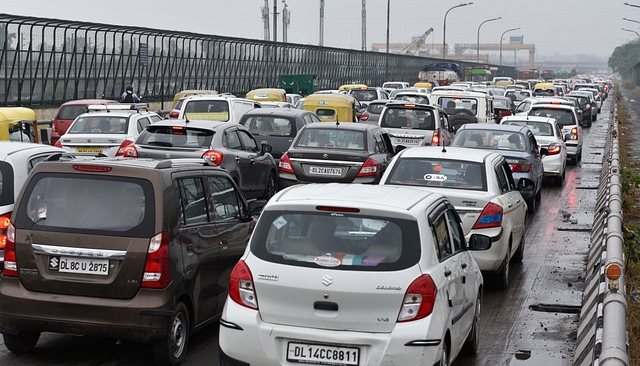
Delhi’s Odd-Even Scheme Returns: How Big A Villain Is Your Humble Car?
Odd-even is set to return in the country’s capital, but just how much do cars contribute in keeping the city’s air noxious? A landmark conducted by the Indian Institutes of Technology (IIT) in Kanpur, which covered the period 2013-14, said during winters, vehicles are the second-largest and the “most consistent” contributing source of pollutants PM10 and PM2.5.
In terms of percentage, it comes to around 20-25 per cent during winters, the report says. The contribution of road dust is negligible during the colder months, unlike summer, when it plays a bigger role, it adds.
However, there’s a catch. The share of two-wheelers, three-wheelers, four-wheelers, trucks and light commercial vehicles in the total vehicular contribution shows that trucks and two-wheelers are the major polluters.
According to the study, which was commissioned by the Sheila Dikshit-led Congress government in Delhi, the share of four-wheelers in the break up of vehicular contribution is 10 per cent each in cases of both PM2.5 and PM10. On the other hand, the share of trucks and two-wheelers stand at around 46 per cent and 33 per cent respectively. Importantly, the government on Wednesday banned the entry of heavy vehicles except those carrying essential commodities into the city. But two-wheelers have been kept out of the ambit of the licence-plate policy.
Cars, however, have a huge share in terms of loading the air with gaseous pollutants such as sulphur dioxide and carbon monoxide with the corresponding percentages of around 57 per cent and 37 per cent respectively. But, over the years, measures like the roll-out of CNG- enabled buses and autos have significantly brought down the level of these toxic gases in Delhi and helped keep them well within safe limits. Suspended particulate matter PM2.5 and PM10, which can measure up to 30 times finer than the width of human hair, have emerged as the dominant pollutants in the recent years.
According to CPCB member secretary A. Sudhakar, the share of cars may be less compared to other factors, but “extraordinary situations call for extraordinary measures”. “It is not the question of impact during emergency situations. All measures which can bring some amount of reduction need to be rolled out. And odd-even is just one of the components in a raft of measures that have been announced,” he said.
Delhi has nearly 5.3 million two-wheelers as against 2.5 million cars. It would have been interesting to know how two-wheeler riders coped with the odd-even rule. They enjoyed a smoother ride on Delhi’s roads when the number of cars on Delhi roads was substantially reduced during the trial period in 2015.
The policy, in its new avatar, is set to fail as two-wheelers are exempt from the scheme that will be in effect from 8 am to 8 pm from 13 to 17 November.
With inputs from PTI
Also Read:
Is Kejriwal Government Confused About Odd-Even Success In Delhi?
Odd-Even: Vision, Not Knee-Jerk Reaction Required To Save Urban India